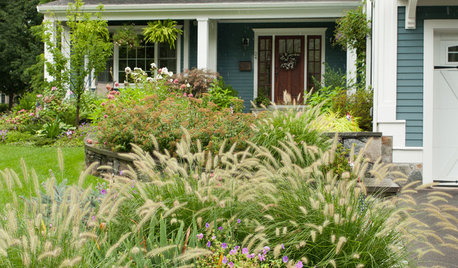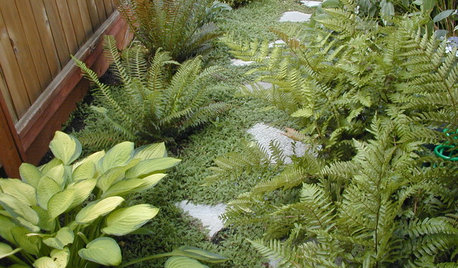Rose of Sharon Invasiveness
brandon7 TN_zone7
17 years ago
Related Stories

GARDENING GUIDESLearn the Secret to Bigger and Better Roses
Grow beautiful roses using both ordinary and unusual soil amendments
Full Story
LANDSCAPE DESIGNMake Your Roses Even More Beautiful With These Companion Plants
Nourish your rosebushes and create a visual feast with these 7 classic and unexpected plant pairings
Full Story
GARDENING FOR BIRDSWild Birds Transform a Woman’s Garden and Life
How Sharon Sorenson created a wildlife haven and became the Bird Lady of Southern Indiana
Full Story
GARDENING GUIDESGreat Design Plant: Bugle Weed, a Quick Ground Cover
It’s highly adaptable, suppresses weeds, reduces erosion and provide weeks of bright flowers. Just watch for invasiveness
Full Story
DECORATING STYLES18 Ways to Bring English Country Charm Home
From topiaries and climbing roses to toile and tea, these design ideas can skew cozy casual or manor formal
Full Story
GARDENING GUIDESGreat Design Plant: Sambucus Nigra
Common elderberry is a highly adaptable shrub from the eastern U.S., with berries galore for wildlife and humans alike
Full Story
GARDENING GUIDESHouzz Call: What’s Your Favorite Backyard Beauty?
The simple, honest daisy is this writer’s go-to garden flower. We want to hear which plant, flowering or otherwise, gives you special joy
Full Story
LANDSCAPE DESIGNGreat Design Plant: Lively Fountain Grass Thrives Just About Anywhere
Enjoy fountain grass for its exuberant form, long-lasting color and texture for borders and more
Full Story
FARM YOUR YARDHow to Build a Raised Bed for Your Veggies and Plants
Whether you’re farming your parking strip or beautifying your backyard, a planting box you make yourself can come in mighty handy
Full Story
LANDSCAPE DESIGN6 Great Ways With Garden Ground Covers
Use them as problem solvers, weed killers, color and texture providers ... ground cover plants have both practical and visual appeal
Full Story





intimidator_3
anntn6b
Related Professionals
Mount Wilson Landscape Architects & Landscape Designers · Brockton Landscape Contractors · Cockeysville Landscape Contractors · Fairfield Landscape Contractors · Mendota Heights Landscape Contractors · Olympia Landscape Contractors · Shaker Heights Landscape Contractors · Washington Landscape Contractors · Palos Heights Landscape Contractors · Elmhurst Solar Energy Systems · Lakeville Solar Energy Systems · Inver Grove Heights Solar Energy Systems · Arlington Roofing & Gutters · Baltimore Roofing & Gutters · Roswell Roofing & Guttershermitonthehill
TnShadyLady
geneo74
brandon7 TN_zone7Original Author
hermitonthehill